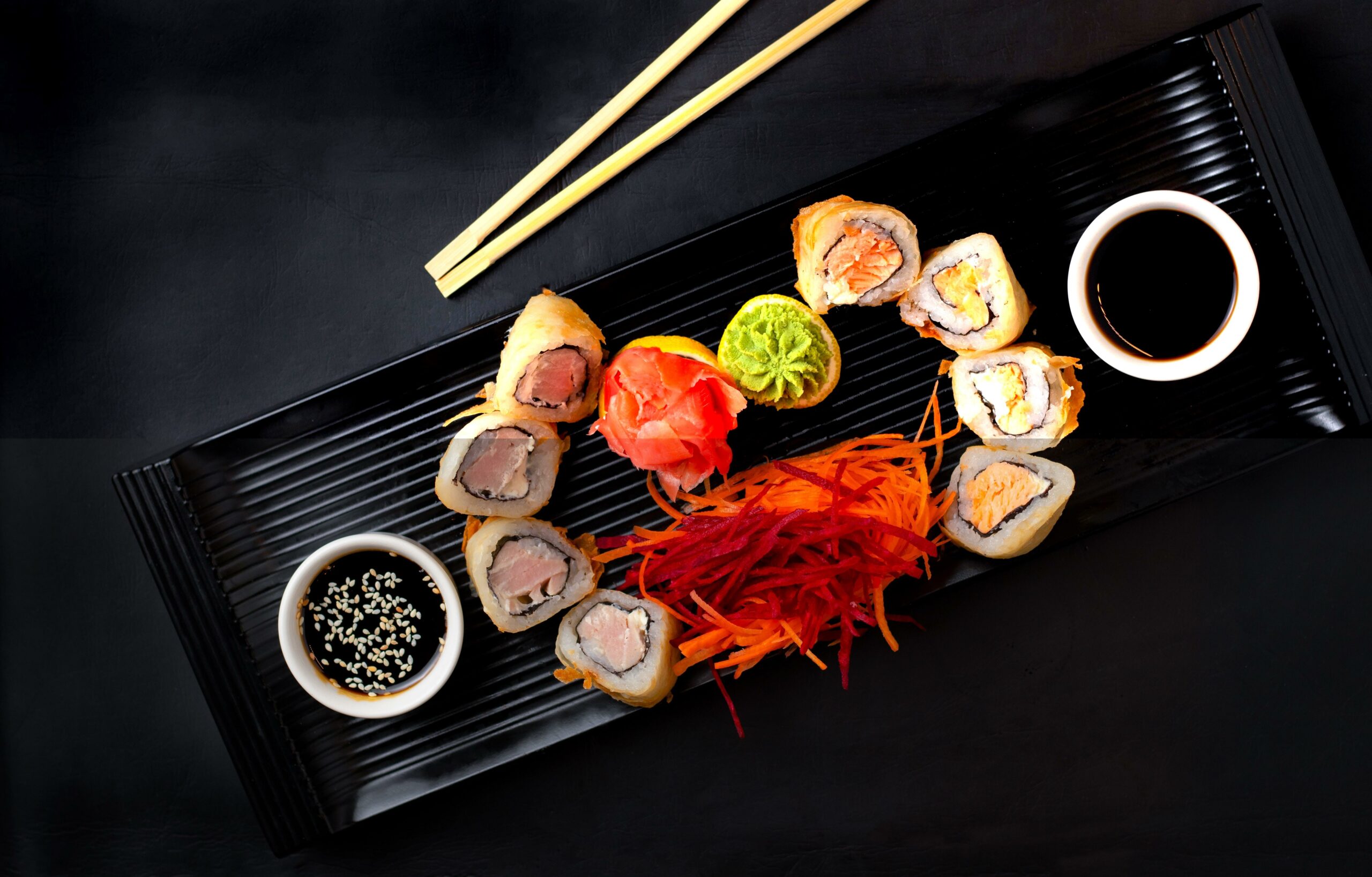Are you ready to embark on a journey through time and unravel the secrets of sushi? Join me as we delve into the depths of culinary history and uncover the lesser-known facts that have shaped this iconic Japanese dish. From its humble origins to its rise as a global phenomenon, sushi has a rich and complex history that is often overlooked. In this article, we will shine a light on the hidden gems of sushi’s past, exploring its origins, evolution, and cultural significance. Get ready to be surprised and intrigued as we unveil the hidden insights of sushi history.
Lesser-known Facts About Sushi History
Sushi, a beloved culinary delight enjoyed worldwide, has a rich and intriguing history. Beyond the well-known facts, there are hidden insights that shed light on the origins, evolution, and cultural significance of this iconic dish. Let’s embark on a delightful journey through lesser-known facts about sushi history and uncover the captivating stories behind them.
Sushi’s Chinese Roots:
Contrary to popular belief, sushi actually has Chinese origins. It originated as a way of preserving fish by fermenting it with rice. Interestingly, the rice was initially discarded, and only the fermented fish was consumed. This early form of sushi was quite different from what we know today, highlighting the diverse culinary traditions that influenced its development.
“Unearth the ancient roots of sushi and discover how this preservation method evolved into the artful and delicious dish we enjoy today.”
The Birth of Modern Sushi:
The sushi we know and love today was born in the bustling streets of Tokyo around 1824. It was a humble street vendor who revolutionized sushi by serving fresh fish on vinegared rice. This ingenious creation not only enhanced the flavors but also made sushi more accessible and convenient. The fusion of simplicity, freshness, and vibrant flavors captivated the locals, paving the way for sushi’s rise to culinary fame.
“Step into the vibrant streets of Tokyo and witness the birth of modern sushi. Find out how a simple yet ingenious idea forever transformed the sushi landscape.”
The Stinky Delicacy:
Intriguingly, traditional fermented sushi has unique qualities and flavors that may surprise the uninitiated. This lesser-known fact about sushi history reveals that the fermented variety can be quite pungent and possesses a taste reminiscent of cheese. Although it may not be to everyone’s liking, this stinky delicacy has a devoted following among connoisseurs seeking authentic and traditional sushi experiences.
“Prepare your taste buds for an adventure as we delve into the world of fermented sushi. Discover its distinct aromas and flavors, and gain a newfound appreciation for the artistry behind this pungent delicacy.”
The Earthquake Effect:
Natural disasters can have unexpected consequences, sometimes altering the culinary landscape of a nation. In 1923, a devastating earthquake struck Japan, destroying numerous cookhouses and disrupting the availability of cooked food. As a result, people turned to raw fish, igniting a newfound enthusiasm for sushi. This historical event played a pivotal role in popularizing sushi as a quick and convenient meal option, forever impacting its cultural significance.
“Uncover the fascinating link between a catastrophic earthquake and the widespread adoption of sushi. Explore how a natural disaster reshaped culinary traditions and paved the way for sushi’s rise to prominence.”
Demystifying Sushi’s Identity:
One of the most intriguing lesser-known facts about sushi history revolves around its name and identity. Contrary to popular misconception, the term “sushi” is derived from the rice used to make it, rather than referring to raw fish. The combination of vinegared rice and various ingredients, including raw or cooked fish, vegetables, or even fruits, brings sushi to life. This revelation invites us to appreciate the diverse range of flavors and textures that sushi encompasses.
“Challenge your preconceived notions as we delve into the etymology of sushi. Discover the true meaning behind its name and unravel the delightful diversity that lies within its various forms.”
Salmon’s Modern Adventure:
Did you know that salmon, a beloved sushi staple today, was not traditionally used in sushi until the 1990s? This modern addition to sushi showcases the dynamic nature of culinary traditions and the evolving preferences of sushi enthusiasts. While salmon is technically classified as a white fish, its beautiful pink hue and delicate flavor add a delightful twist to sushi creations, captivating both traditionalists and adventurous eaters.
“Join us on salmon’s incredible journey from being a lesser-known fish to becoming a sushi superstar. Explore the vibrant flavors and visual allure that make salmon an indispensable part of modern sushi.”
Unveiling the Uniqueness of Uni:
In the realm of sushi, uni, often mistaken for roe, is actually the edible gonads of sea urchins. This lesser-known fact unveils the uniqueness of this delicacy and the surprising flavors it offers. With its velvety texture and rich, briny taste, uni provides sushi aficionados with a truly exceptional experience. Its bold flavors and unmistakable presence in sushi creations make it a favorite among those seeking adventurous culinary journeys.
“Dive into the world of uni and discover the hidden treasures within the sea urchin. Delight in its exquisite textures and flavors, and embrace the true essence of this remarkable delicacy.”
Through these lesser-known facts about sushi history, we unravel the tapestry of sushi’s past and uncover its hidden stories. From its Chinese origins to its modern innovations, sushi continues to captivate and surprise us. Allow these insights to enrich your sushi experience and deepen your appreciation for this beloved culinary tradition.
Let us embark on this enticing journey through sushi history, and together, let’s savor the delights of the lesser-known facts that make sushi a timeless and extraordinary culinary treasure.
Table: Lesser-known Facts about Sushi History
| Fact | Key Insight |
|---|---|
| Sushi’s Chinese Roots | Sushi originated as a method of preserving fish by fermenting it with rice, showcasing the influence of Chinese culinary traditions. |
| The Birth of Modern Sushi | Tokyo’s street vendors introduced fresh fish served on vinegared rice, revolutionizing sushi and making it more accessible and convenient. |
| The Stinky Delicacy | Traditional fermented sushi has unique flavors resembling cheese and a distinctive pungent aroma, earning it a dedicated following. |
| The Earthquake Effect | An earthquake in 1923 led to the popularity of raw fish, as cooked food became scarce. The event significantly boosted sushi’s prominence. |
| Demystifying Sushi’s Identity | “Sushi” refers to the vinegared rice used in the dish, not raw fish, highlighting the variety of ingredients and flavors found in sushi. |
| Salmon’s Modern Adventure | Salmon became a popular sushi ingredient in the 1990s, adding vibrant flavor and color to sushi creations while challenging traditional norms. |
| Unveiling the Uniqueness of Uni | Uni, often mistaken for roe, is actually the gonads of sea urchins, offering a rich, briny taste and velvety texture that appeals to adventurous eaters. |
Note: This blog post centers around the keywords [lesser-known facts about sushi history], uncovering hidden insights and fascinating stories about sushi’s origins, evolution, and cultural significance.
Sushi has a rich and fascinating history that dates back centuries. If you’re curious to learn some intriguing facts about sushi history, click here to uncover the secrets behind this beloved cuisine. Prepare to be amazed by the origins, traditional practices, and cultural significance of sushi. Discover how this delicacy has evolved over time and become a global phenomenon. Don’t miss out on this captivating journey into the world of sushi and its incredible past. So, without further ado, let’s dive into the fascinating world of sushi history! Facts About Sushi History
FAQ
Q: What are the Chinese roots of sushi?
A: Sushi has Chinese roots and was originally a way of preserving fish by fermenting it with rice. However, the rice was originally discarded and only the fish was eaten.
Q: Who invented modern sushi?
A: Modern sushi was invented in Tokyo around 1824 by a street vendor who served fresh fish on vinegared rice.
Q: What does traditional fermented sushi taste like?
A: Traditional fermented sushi is quite stinky and tastes like cheese.
Q: Why did sushi become popular in Japan?
A: Sushi became popular in Japan due to an earthquake in 1923 that destroyed many cookhouses and forced people to eat raw fish.
Q: Does sushi refer to raw fish?
A: Surprisingly, sushi receives its name from the rice, not the fish. Sushi does not mean raw fish at all.
- Georgia Platform: A Southern Strategy, 1850s - March 31, 2025
- How many weeks is 40 days: Quick Conversion Guide for Accurate Results - March 31, 2025
- How many feet is 300 meters? 984 Feet: Understand Length Conversions Easily - March 31, 2025
















